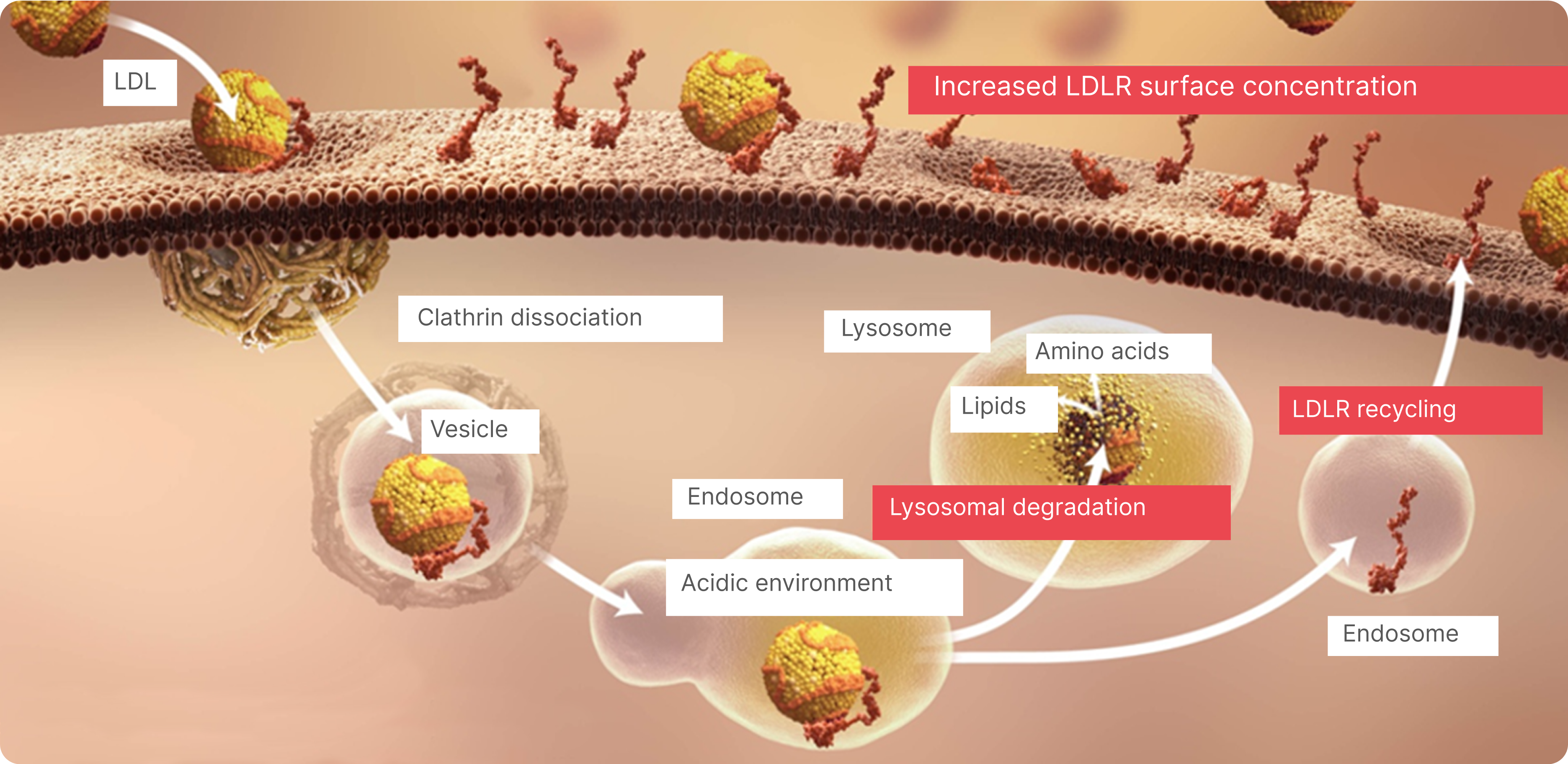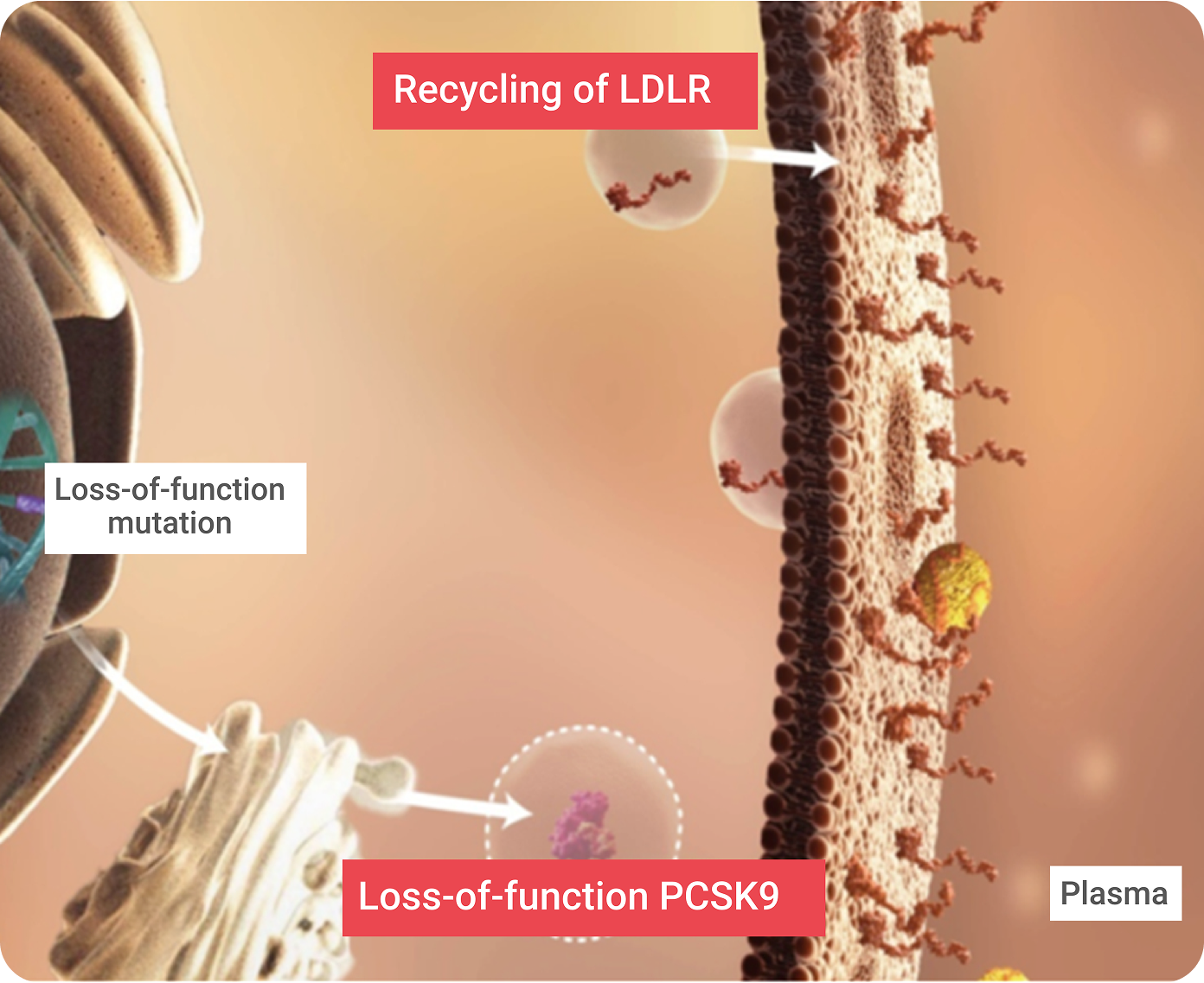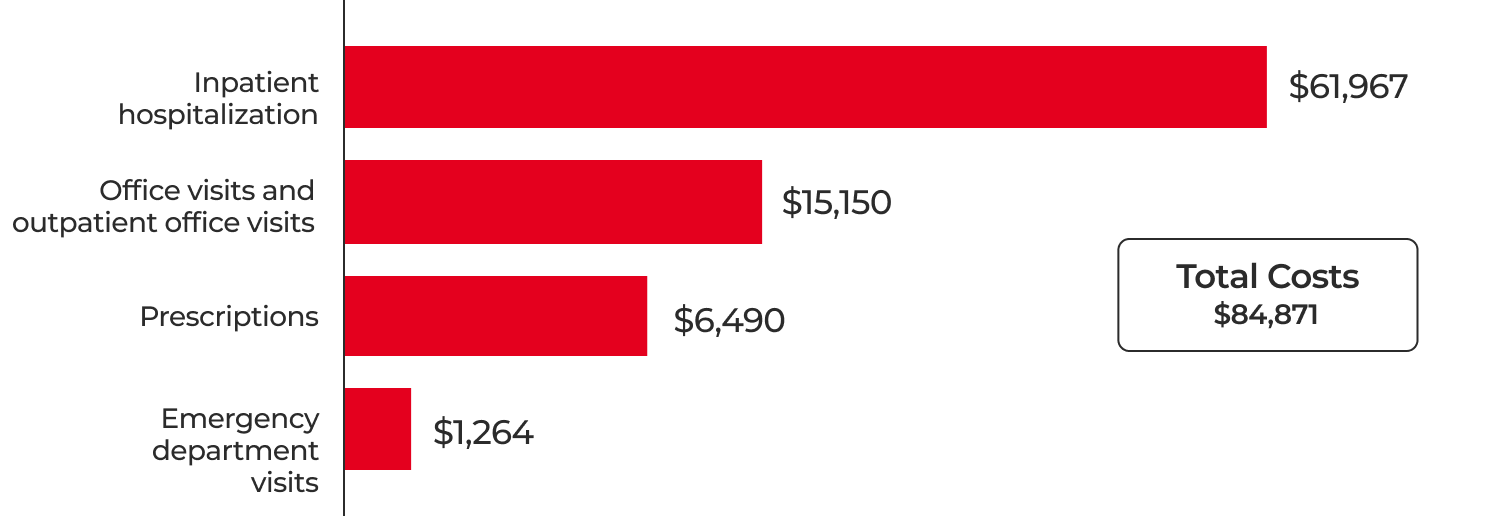If you click “Continue” below, you will leave the current site and be taken to a site maintained by a third party that is solely responsible for its content. Amgen provides this link as a service to website visitors. Amgen is not responsible for the privacy policy of any third-party websites. We encourage you to read the privacy policy of every website you visit.
Atherosclerotic plaques may remain asymptomatic, become an obstruction and cause angina, or become vulnerable to rupture that can cause acute thrombosis and CV events.
The key features of plaque that make it vulnerable to rupture1-5
Download this overview that explains ASCVD and includes recent clinical guidelines for the treatment of patients with very high-risk ASCVD.
Numerous clinical trials with statins using intravascular ultrasound (IVUS) imaging have demonstrated a direct relationship between LDL-C–lowering and a reduction in atheroma (plaque size) volume.
*SATURN: effects of high-intensity statin vs high-intensity statin.
†REVERSAL: effects of high-intensity statin vs moderate-intensity statin volume.7
‡ILLUSTRATE: effects of statin + CETP inhibitor vs statin + placebo.8
Serial intravascular ultrasound was used in the imaging trials to evaluate the various anti-atherosclerotic strategies.
Statin trials using optical coherence tomography (OCT), a catheter-based coronary artery visualization technique, demonstrate that achieving lower LDL-C levels with more intensive therapy is associated with increased fibrous cap thickness (FCT) and smaller lipid arc.4,9,10
Patients in the study were stratified according to achieved LDL-C levels (< 50 [87 plaques], 50–70 [81 plaques], 70–100 [117 plaques], ≥ 100 mg/dL [130 plaques]). Data analyzed from the Cleveland Clinic FD-OCT Registry, which included 293 and 122 non-obstructive lipid and fibrous plaques in 280 stable statin-treated CAD patients evaluated by FD-OCT imaging in vessels requiring PCI.9
ASCVD = atherosclerotic cardiovascular disease; CETP, cholesteryl ester transfer protein; CAD, coronary artery disease; FD-OCT, frequency-domain optical coherence tomography; PCI, percutaneous coronary intervention.

















